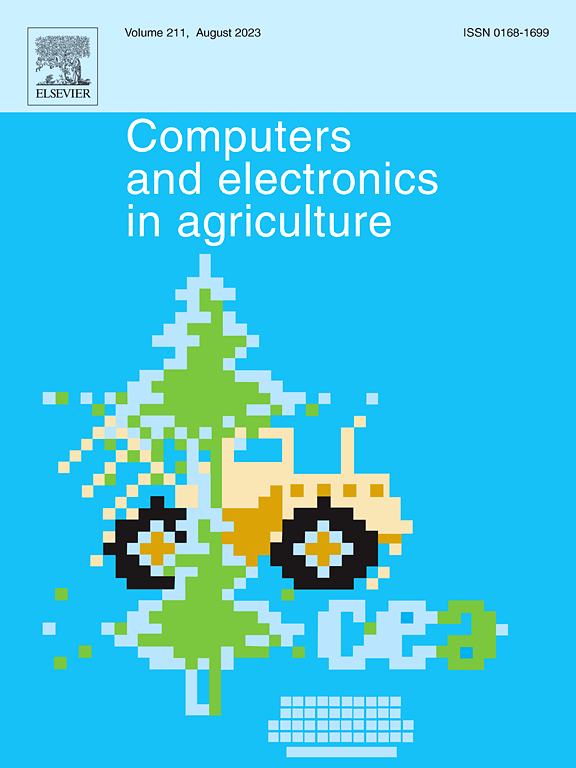A high-efficiency regulation method for optimal root zone temperature under different nitrogen fertilizer using discrete curvature
IF 8.9
1区 农林科学
Q1 AGRICULTURE, MULTIDISCIPLINARY
引用次数: 0
Abstract
Nitrogen (N) fertilization plays an important role in plant life activities and growth. To optimize N uptake and improve dry matter accumulation in plants, this study proposed a method to obtain optimal root zone temperatures (RZT) under different N levels. The experiment was designed with five N levels and five RZTs for tomato seedlings, and the chlorophyll fluorescence data of tomato leaves were measured at each treatment. Polynomial regression and elastic net regularization were used to fitting the response curve of Fv/Fo, which is indicated to the potential activity of photosystem Ⅱ (PSⅡ). The feature parameters of curvature on the response curve were considered as the targets for regulation and were calculated by the U-chord curvature method. The dynamic regulation model of suitable RZT of tomato was obtained by fitting the curvature feature parameters. The results of the verification experiment showed that the experimental group increased root dry weight by 20.60%-92.30%, stem dry weight by 9.09%-39.90%, leaf N content by 2.70%-6.15%, and leaf phosphorus content by 6.08%-8.59%. Therefore, RZT optimization has a key role in improving plant photosynthesis, plant N uptake efficiency and dry matter accumulation under different N fertilization conditions. The research is significant for RZT optimization of hydroponic crops with different nutrient supply in protected agriculture.
不同氮肥条件下利用离散曲率高效调节根区最佳温度的方法
氮肥在植物的生命活动和生长中起着重要的作用。为了优化植物对氮的吸收,促进植物干物质积累,本研究提出了不同施氮水平下根区温度(RZT)的确定方法。试验设计了5个氮素水平和5个rzt处理番茄幼苗,测定了每个处理下番茄叶片的叶绿素荧光数据。利用多项式回归和弹性网正则化方法拟合了Fv/Fo的响应曲线,表明了光系统的潜在活性Ⅱ(PSⅡ)。以响应曲线上的曲率特征参数作为调节目标,采用u弦曲率法进行计算。通过曲率特征参数拟合,得到番茄适宜RZT的动态调节模型。验证试验结果表明,试验组根系干重提高20.60% ~ 92.30%,茎干重提高9.09% ~ 39.90%,叶片氮含量提高2.70% ~ 6.15%,叶片磷含量提高6.08% ~ 8.59%。因此,不同施氮条件下RZT优化对提高植物光合作用、植物氮吸收效率和干物质积累具有关键作用。该研究对设施农业中不同养分供给的水培作物的RZT优化具有重要意义。
本文章由计算机程序翻译,如有差异,请以英文原文为准。
求助全文
约1分钟内获得全文
求助全文
来源期刊

Computers and Electronics in Agriculture
工程技术-计算机:跨学科应用
CiteScore
15.30
自引率
14.50%
发文量
800
审稿时长
62 days
期刊介绍:
Computers and Electronics in Agriculture provides international coverage of advancements in computer hardware, software, electronic instrumentation, and control systems applied to agricultural challenges. Encompassing agronomy, horticulture, forestry, aquaculture, and animal farming, the journal publishes original papers, reviews, and applications notes. It explores the use of computers and electronics in plant or animal agricultural production, covering topics like agricultural soils, water, pests, controlled environments, and waste. The scope extends to on-farm post-harvest operations and relevant technologies, including artificial intelligence, sensors, machine vision, robotics, networking, and simulation modeling. Its companion journal, Smart Agricultural Technology, continues the focus on smart applications in production agriculture.
 求助内容:
求助内容: 应助结果提醒方式:
应助结果提醒方式:


